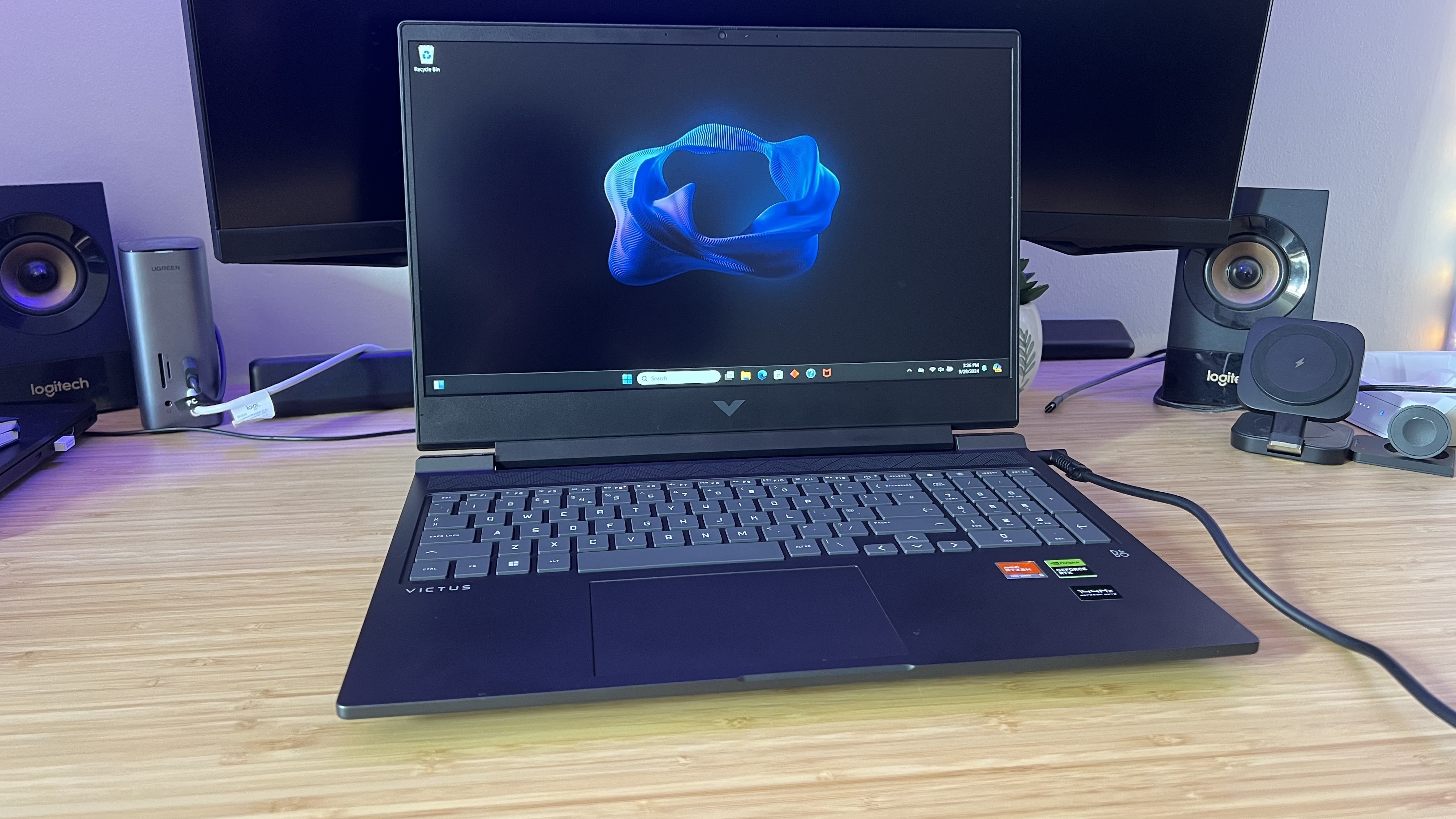
HP’s budget Victus range is a little younger than the competition, but the most recent refresh brings a massive range of components into the equation. This is a bargain hunter’s best friend, offering fantastic 1080p gaming with some sacrifices along the way. Just how much those sacrifices will impact your day to day play will depend on how much you value your display and keyboard, but considering the very best gaming laptops can run you for three times the Victus’s price point, it’s a cheaper avenue well worth exploring. I’ll be primarily comparing the HP Victus 16 against two similarly priced rivals; the Acer Nitro 16 and the Asus TUF A15 (currently my top pick for a budget gaming laptop).
Design
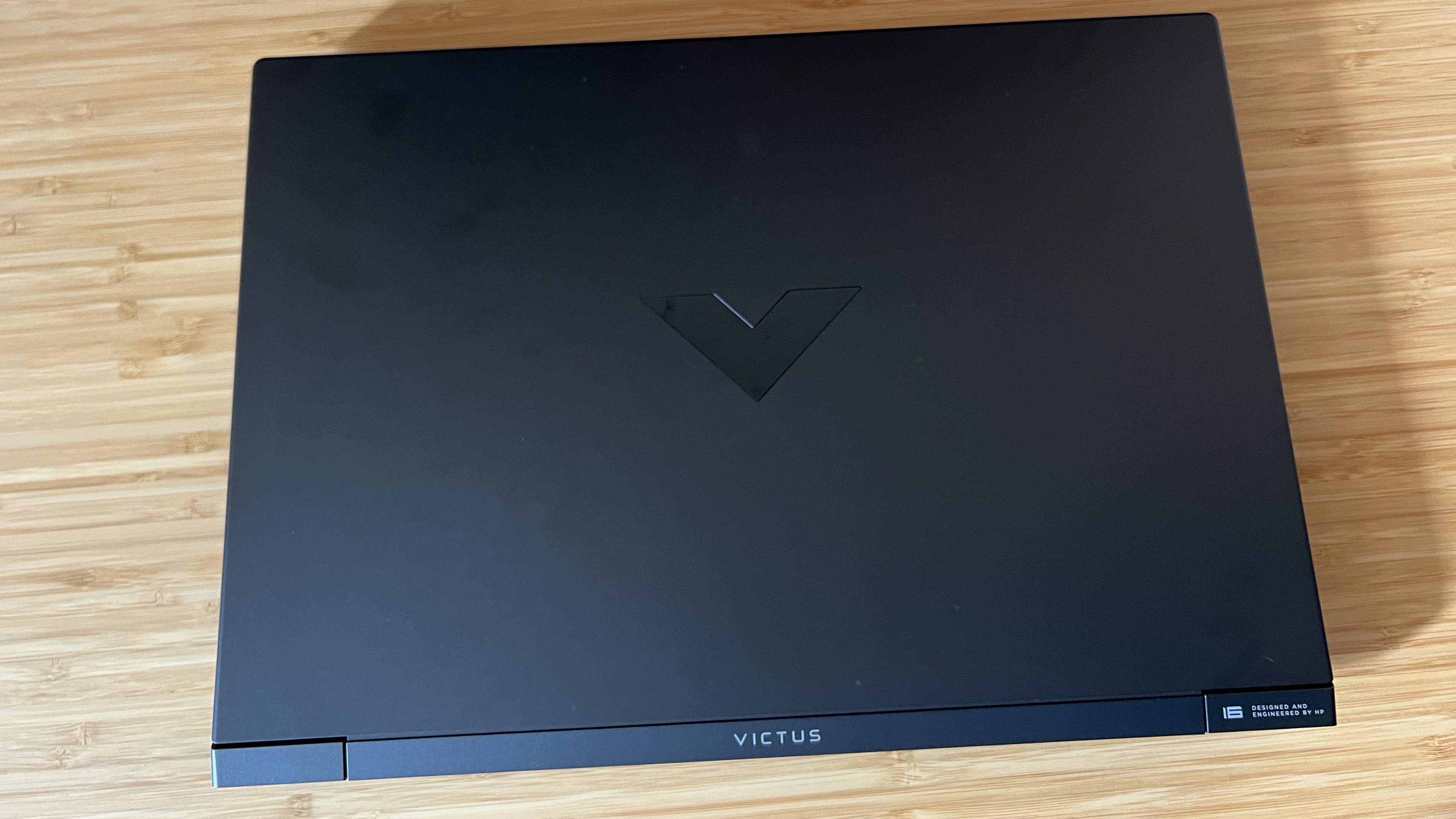
- Subtle but still slick aesthetic
- Feels less gamerfied than other cheap gaming laptops
- Slightly heavier but still portable
The HP Victus 16 keeps things low profile. While that was a thorn in the side of the bland-looking HP Omen 17, this smaller rig seems to get away with it. Maybe it’s the less ‘rounded’ look, with sharper angular corners and a more ‘gamified’ rear shelf, or maybe it’s the fact that the glossy Victus logo on the lid just looks cooler than an Omen stamp - but this machine just looks and feels slicker.
This is a cheaper gaming laptop, so an all-plastic construction is to be expected. However, I was impressed with how sturdy everything feels - there’s no rattling in the main chassis and no creaking when grabbed in a hurry. While the hinge does have some considerable wobble and the screen flexes far more than you’d find on something like the Razer Blade 16, that opening mechanism never feels crunchy or loose - something I often find in more budget-oriented rigs. Unlike the Omen, however, this is not a one-hand opening job, the base does lift when the screen reaches the halfway point. There’s also no extended lip around the top bezel to help either. That said, the hinge extends along the centre of the device - a far more durable solution long-term compared to the bracket hinges on the Nitro 16 and TUF A15.
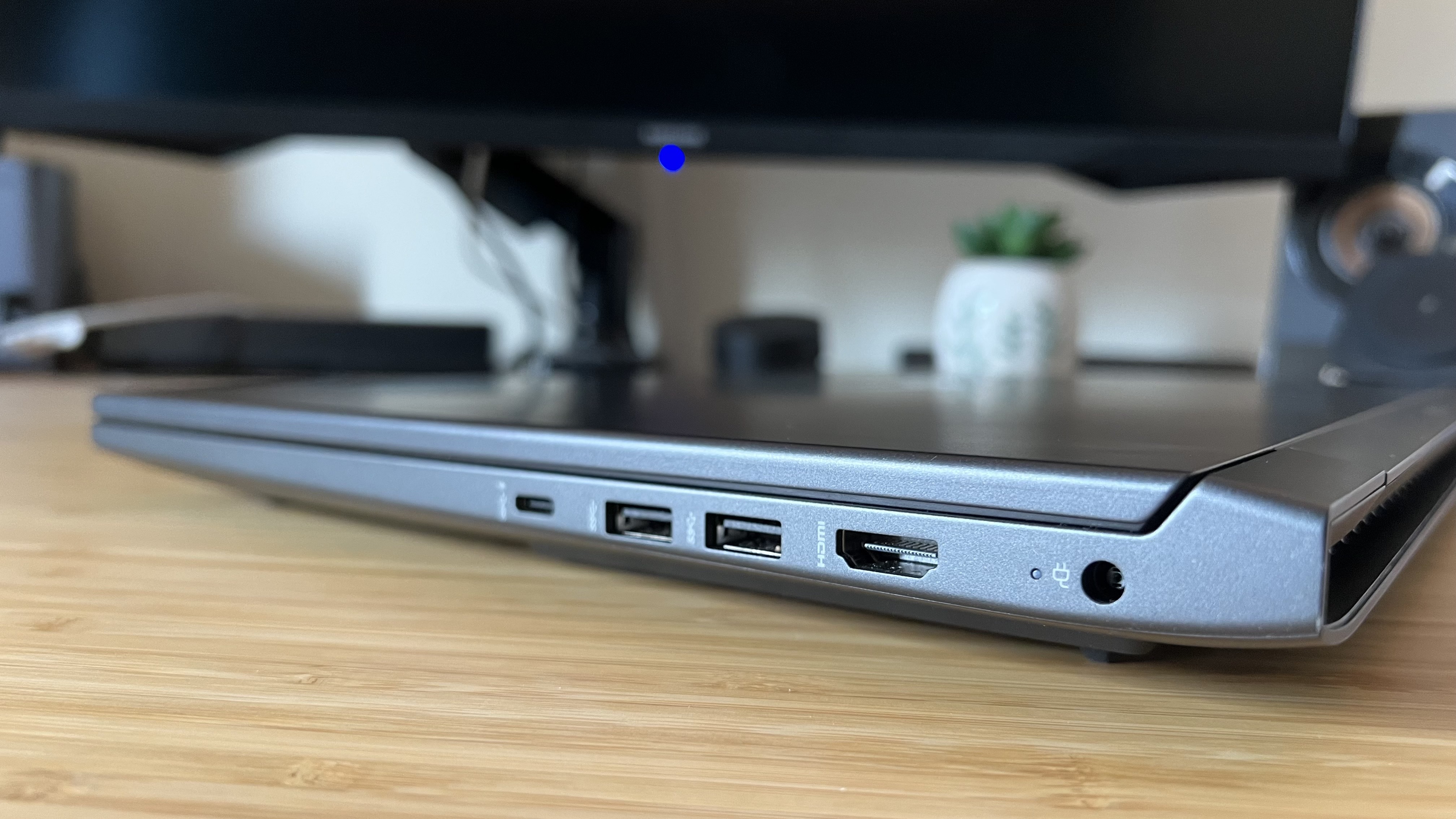
At 5.14lbs, the HP Victus 16 is lighter than the Acer Nitro 16 (6.15lbs), a much stockier device overall, but is slightly heavier than the Asus TUF A15 (4.85lbs). That’s still easily within the realm of portability, especially considering the Victus is actually (and only just) the thinnest machine in this testing pool at 0.94-inches compared to the 0.98-inches of both the Asus and Acer. While it puts a little more strain on the back compared to the 4lb Razer Blade 14 I tend to carry around, I was still able to comfortable travel with the Victus in a backpack for a couple of hours.
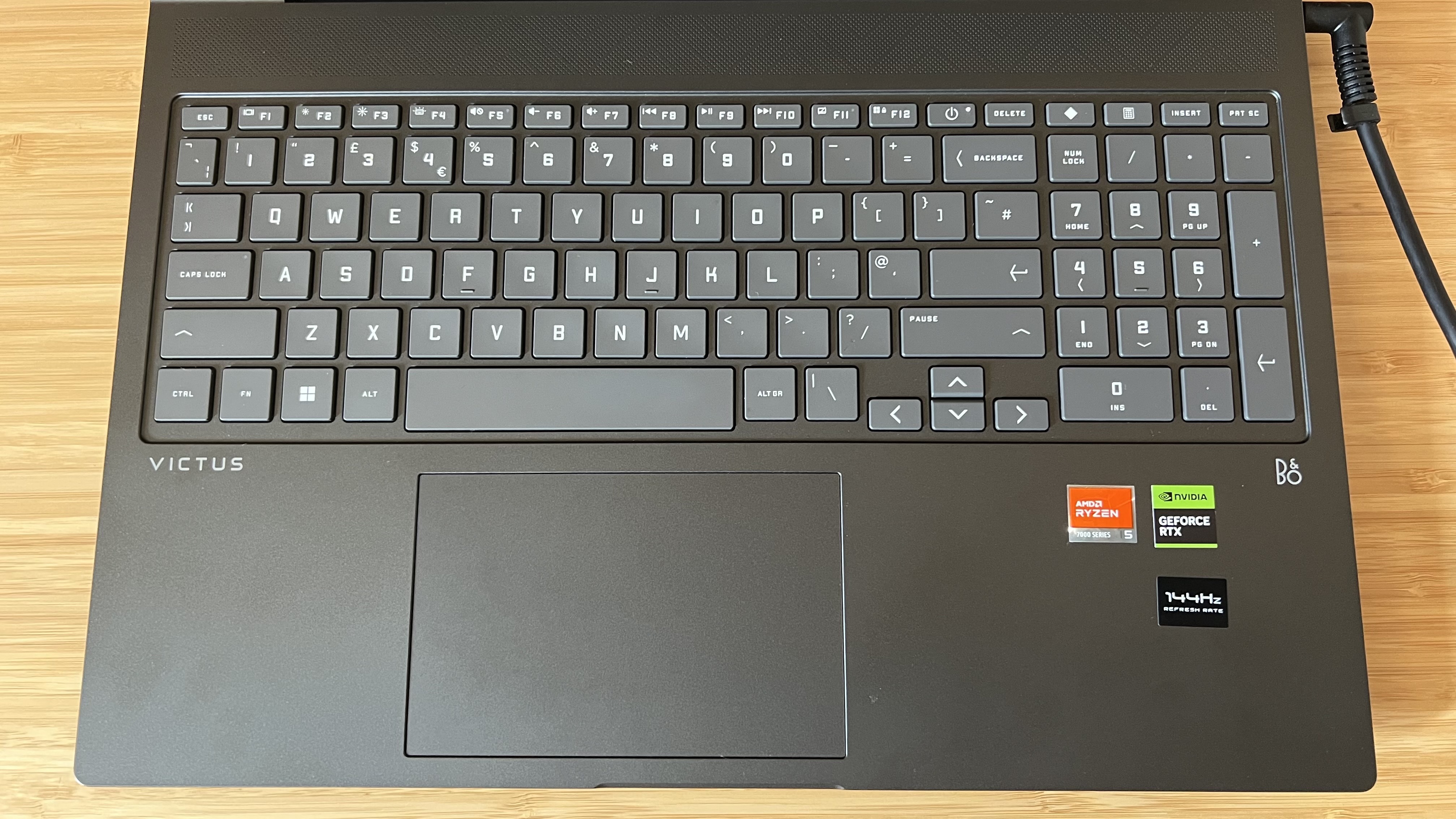
Under the hood, you’ll find a one-zone RGB keyboard offset against the darker gray base with a lighter keycap color. That’s a nice touch, steering clear of looking more like an everyday machine while still avoiding tacky gamer frills. Asus tends to color its WASD keys or make them translucent on its TUF range and it can cheapen the experience. Overall, I prefer the internal slab of the Victus over the fairly heavily gamerfied Asus TUF A15. It also looks far more grown up than the heavy white bordering on the Acer Nitro 16 as well. The only branding you’ll find inside is an almost imperceptible gray Victus logo at the bottom of the display chin, a small Victus stamp to the left side of the keyboard, and a B&O logo squeezed in the corner of the number pad.
Features
- Loads of configurations available
- Display lacks brightness and vibrancy
- Soft feeling keyboard
The HP Victus 16’s configuration options are fairly typical of a budget laptop. You’ve got a whole roster of AMD and Intel builds available, running from RTX 4050 to RTX 4070 graphics cards, with individual spec sheets that seem to change with every retailer you check. It’s a little tricky to fully map the Victus’s full range, especially considering there are still older RTX 30-Series models floating around and even some with ludicrously slow 60Hz displays. However, the majority of models on the shelves right now pair a low to mid-range processor with an entry level GPU. My Ryzen 5 7640HS / RTX 4050 build comes with 16GB DDR5 RAM and a 1TB M.2 SSD, but most models on HP’s site up that CPU to an 8000-series, for example.
The specs put this machine at the lower end of mid-range or, more often, in the budget category, so its feature set does make a lot of sense. The display, for example, is more than serviceable at 144Hz FHD, but it lacks the brightness and vivid immersion of more expensive machines. I’m still able to see everything I need to, but darker scenes need a darker room and colors rarely pop off the screen. It’s a little dulled in everything from contrast to sharpness as well. Still, that HDMI 2.1 port means you can easily output to a dedicated gaming monitor and still reap the rewards of a lower price tag.
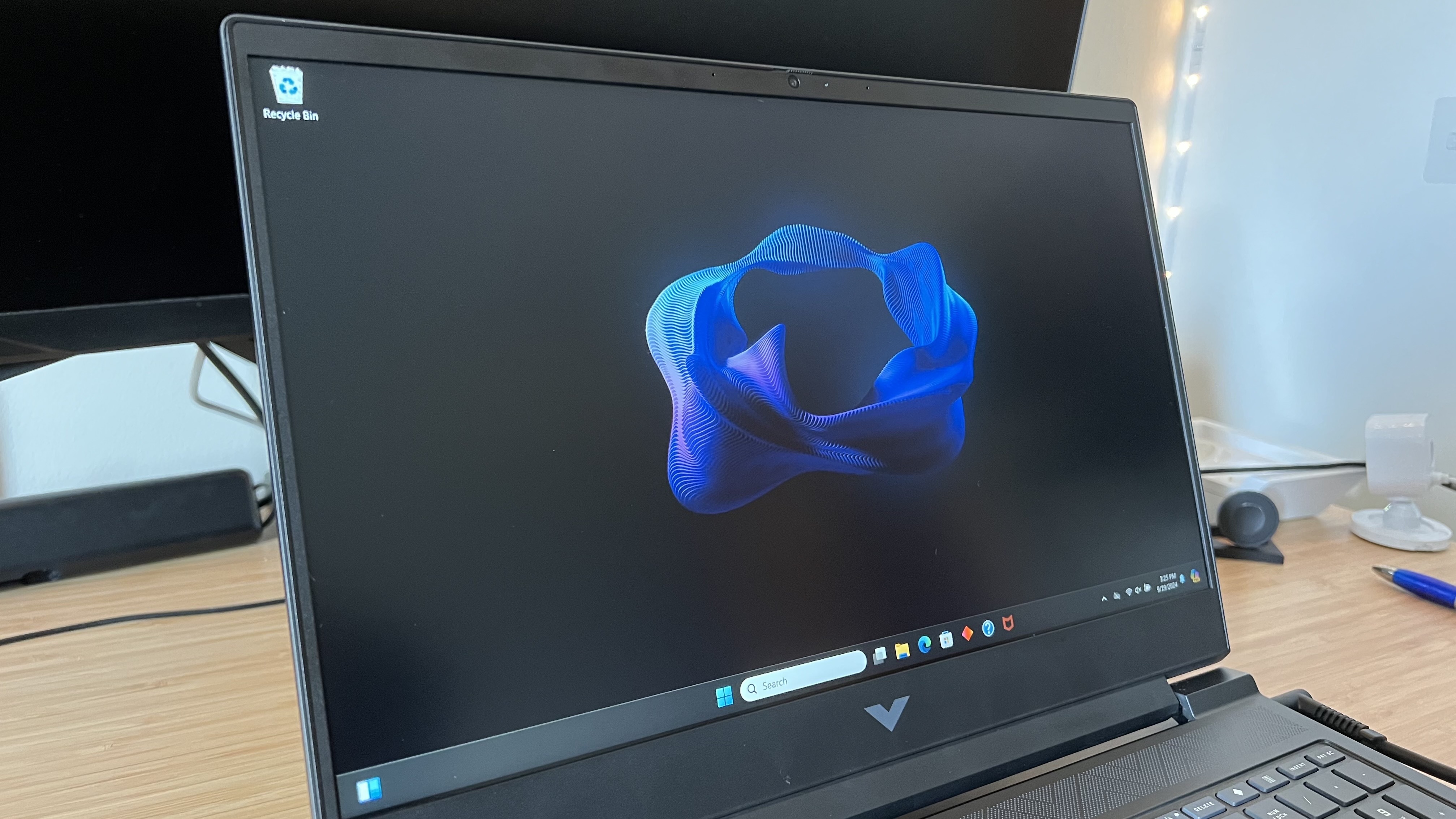
That’s not to say the display is bad for the price - in fact, it functions pretty much as expected considering this lower cost. However, the Acer Nitro 16 does go beyond this average with a more vibrant panel overall. I did test a QHD model of the Nitro 16, but the boost in resolution will only affect the sharpness and clarity of the overall picture. Even at an FHD level, you’re still getting better brightness from Acer, which means you’ll have a much better time with darker horror games. The display of the Asus TUF A15 performs similarly to that of the Victus.
The keyboard is much the same. This is a kitted out deck of keys with a full number pad, function row, excellent spacing, and a comfortable feel. Yes, you’re getting smaller half keys for the arrow buttons, but overall everything looks pretty solid. I could feel that lower price tag under the fingertips, though. Key presses are a little too soft to truly be called tactile, and travel feels a little shorter than usual. It’s certainly quiet and still offers an energetic feel, but it’s far from the super satisfying switches of something like the Alienware M16 R2. Overall the typing experience is slightly better than that of the Asus TUF A15, though not quite as snappy as the Acer Nitro 16.
The Victus does offer a good range of ports, though shows its age by opting for only one USB-C. While you’re still getting DisplayPort 1.4 and power delivery via this connection, most gaming laptops ship with two of these ports these days. Both the Acer Nitro 16 and Asus TUF A15 do so, with the latter even stretching into USB4 territory. You’re still getting three slightly older though still serviceable USB-A 3.2 Gen 1 ports, an HDMI 2.1, an RJ-45 Ethernet, and a 3.5mm audio jack as well.
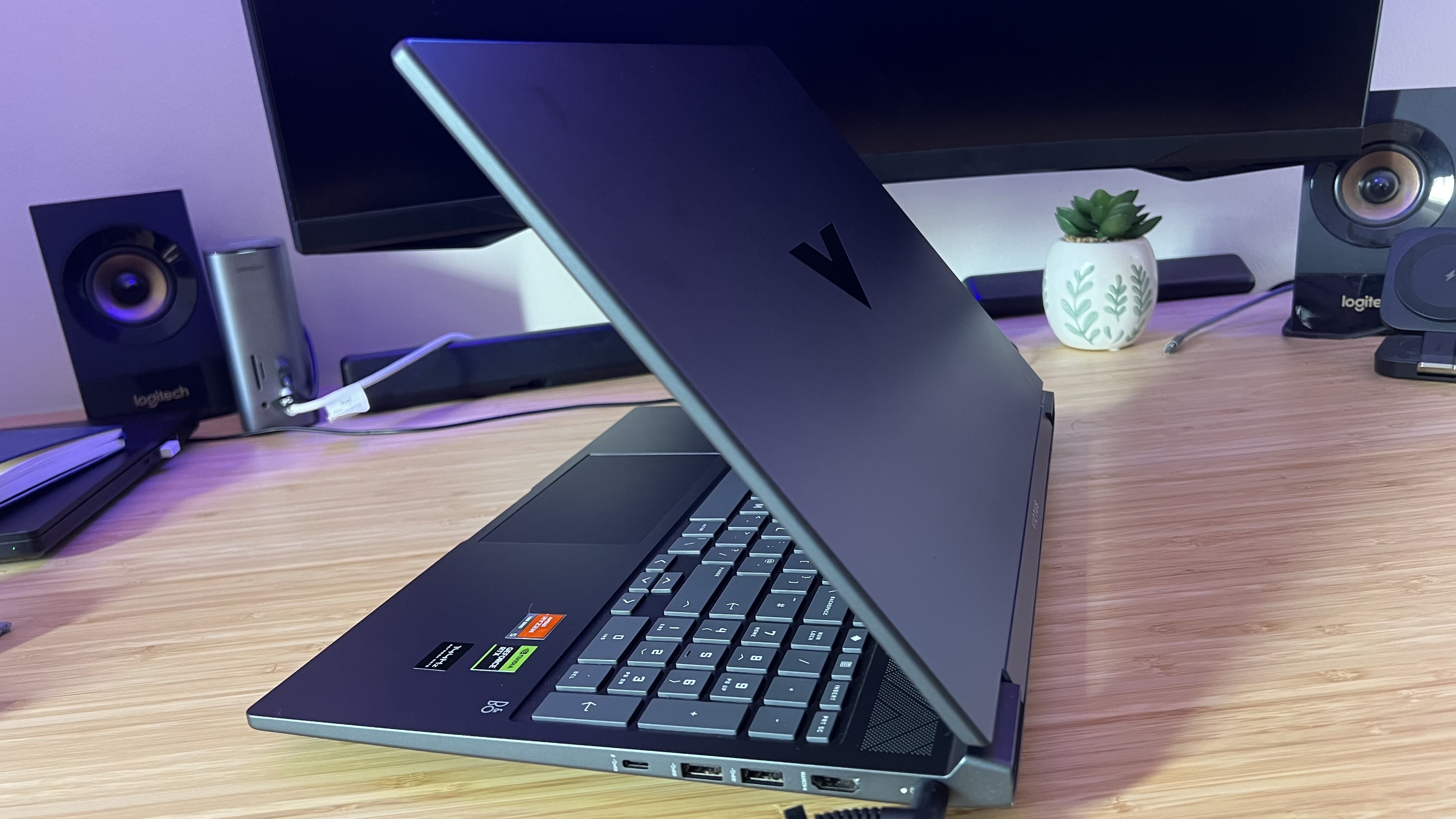
All of these connections are run around the sides of the machine, with no rear ports, and mostly cluster around the right edge. That means those using their gaming laptop in a full desk setup will need to manage their cables to avoid them taking over the desk top. I generally prefer a rear selection of ports to keep everything tidy, and the Nitro 16 provides just that, but fewer cheap gaming laptops offer this form factor.
The Victus comes with a few programs pre-loaded, but the first one you’ll be checking out is the Omen Gaming Hub. This is a fairly bloated program with a lot of marketing, but once you’ve filtered through the menus you’ll be able to configure that one-zone RGB lighting, set performance presets, and monitor your system. You’re also getting a 1080p webcam that provides a nicely crisp image in well-lit environments but quickly becomes blurred and blocky once that sun’s gone down. If you’re a streamer you might need to grab a dedicated webcam for this one.
Performance
- Impressive entry level performance
- Efficient cooling system
- Hits 60fps in more demanding games
The HP Victus 15 is actually my first foray into the mobile RTX 4050, and I’m impressed. Between three-figure framerates on Shadow of the Tomb Raider and 60fps in Returnal running on Epic mode, this thing can put its components to work. The older Ryzen 5 holds things back a little when the heat is on - The Talos Principle 2 is a little jagged in its actual running, with some stutters and slow-downs before returning to form. That accounts for the 35fps average rate I saw in my benchmarking at Ultra settings, but as long as you’re tweaking those dials to suit your setup this thing can fly.
It’s coming close to the HP Omen 16 Transcend’s RTX 4060 performance across a number of benchmarks, another budget-minded FHD machine. As an RTX 4050 machine, it’s generally always going to be at the bottom of the graph in this testing pool. After all, at the top we’ve got an RTX 4070 GPU in the Acer Nitro 16. However, those numbers aren’t trailing by nearly as much as I’d expected, and I suspect that’s down to the Victus’s impressive cooling system.
This chassis never climbed the temperature scale too high, even running games like Returnal and Assassin’s Creed Valhalla that can push far more substantial machines to the red zone. Vents are plentiful across the Victus, and the brand has used the machine to debut its Tempest cooling system as well. That’s incredibly rare on an entry level machine, comfortable temperatures are usually one of the first things you sacrifice to keep that price low.
Synthetic Time Spy and Fire Strike benchmarks from 3D Mark told a similar story, the Victus trails behind its RTX 4060 and RTX 4070 contemporaries but doesn’t fall off a ledge. In fact, it holds steadily firm in a solid set of scores. Yes, it’s not pushing out to the QHD resolution display of some of the RTX 4070 models, but a 20,660 / 8,565 set of scores makes it perfectly playable across newer games.
It looks like, in these more relaxed conditions, the AMD Ryzen 5 7640HS might be pulling a little more weight than we give it credit for. In a pure productivity setting (simulated by the PC Mark 10 benchmark), the HP Victus scored above machines with far more sophisticated CPUs on paper. At 7,152, it’s second in the testing pool, only dropping behind the larger HP Omen 17 and its AMD Ryzen 7 8845HS.
In everyday use, despite the lower quality display, the HP Victus 16 never let me down. While some heavier outdoor scenes could give it pause for thought, it generally ran everything smoothly and without too much complaint. That performance did drop when connected up to a QHD monitor, revealing slight cracks in those framerates but for casual play the raw performance on offer here would suit me just fine.
Should you buy the HP Victus 16?
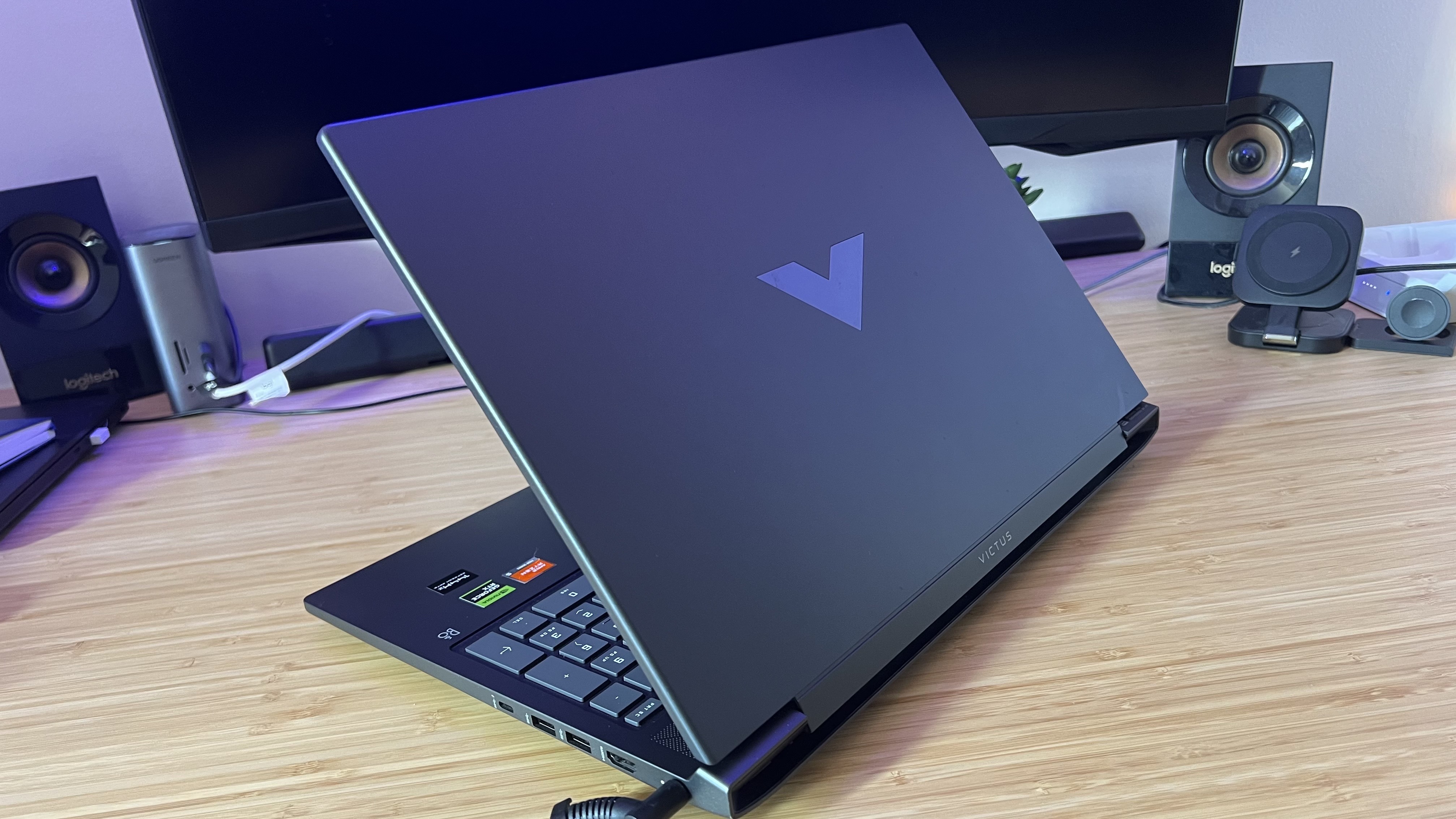
The HP Victus 16 is a master of 1080p performance even in a super cheap RTX 4050 form factor. If you’re going all out on getting the best value for money purely from a performance standpoint, this is going to be a fantastic buy. However, other machines like the Asus TUF A15 and Acer Nitro 16 have the Victus beat in terms of features. If you don’t want to make too many sacrifices to your screen quality, I’d opt for the Nitro 16, but if you want a more well-rounded experience overall the TUF A15 remains my go-to.
How I tested the HP Victus 16
I used the HP Victus 16 for a period of two weeks, with one spent testing alongside the HP Omen 17. The second week was spent purely running the Victus for all work, play, and streaming content. In that time I tested across the games I’m currently working my way through at the moment; Assassin’s Creed: Valhalla, Fallout 4, and The Outer Worlds (fine, there was a little TCG Card Shop Simulator Prologue thrown in there for good measure). On top of that I used in-game benchmark tools across Shadow of the Tomb Raider, Total War: Three Kingdoms, Returnal, and The Talos Principle 2 as well as synethetic benchmarks in 3D Mark, and PC Mark 10. For more information on how we test gaming laptops, check out the full GamesRadar+ Hardware Policy.
For a look at the competition, be sure to check out the best Asus gaming laptops and the best Alienware laptops on the market - or take a look at the best Razer laptops for something a little more premium.







